Directed by: Dario Argento
Written by: Dario Argento, Franco Ferrini, Gianni Romoli, T.E.D. Klein
Starring: Asia Argento, Christopher Rydell, Frederic Forrest, Piper Laurie
HCF REWIND NO. 184: TRAUMA [US 1993]
AVAILABLE ON DVD
RUNNING TIME: 107 min
REVIEWED BY: Dr Lenera, Official HCF Critic
On a rainy night, a chiropractor opens a door to let an unseen patient into her office. When the chiropractor says to the unseen person that “you look familiar”, the person knocks her out, takes out a machine-operated wire device and decapitates the woman. Several days later, David Parson, a sketch artist for a Minneapolis TV news programme, prevents Romanian Aura Petrescu from throwing herself off a bridge. She steals his wallet but is then grabbed by two men who take her away in a car to the home of her parents. There, her mother Adriana conducts a séance where she is possessed and mentions a monster with and more murders to come. Outside, Aura finds a headless body and sees a black-clad killer holding up the severed heads of her mother and father in the pouring rain.…..
This Dario Argento fan remembers vividly when Trauma came out in 1993 and the hostile reputation it got from fans who considered it a tame and unforgiveable selling-out by the director to the commercial American market, which didn’t like it much either. It was especially criticised for its relative lack of violence. I liked the movie as soon as I saw it and even back then didn’t agree with all the vitriol that was poured onto it. It is an odd, awkward piece of work, there’s no doubt about it, coming across as an uneasy combination of a typical early Argento giallo with an American TV thriller, but compared to some of the stuff the man has given us recently, it seems like a masterpiece, and especially with repeated viewings there is a lot to enjoy. It has some very memorable sequences and a warmth that is mostly missing from his post-Deep Red films, while there is actually some gruesomeness: it’s just less than had become the norm for Argento at the time, and is closer to being at the same level as his first three movies. I reckon that if it had been the work of another director who made no secret of the fact that he or she was making an Argento-style film in the US, Trauma would have had a much better response.
Argento had actually attempted to break more into the American market just before with Two Evil Eyes, his two-part Edgar Allan Poe adaptation with George Romero. Trauma was partly inspired by Argento’s daughter Anna, who suffered badly from anorexia and all the psychological problems that went with it. The project was originally titled Murder Guillotine, than Aura’s Enigma before settling on the far too common Trauma. Scheduling problems meant that Bridget Fonda could not play Aura, while Tim Roth, James Spader and John Cusack all turned down the part of David, and Argento’s wish for Goblin to score was refused by the producers. The script by Argento, Franco Ferrini and Gianni Romoli [the latter two each worked on one half of the story] was heavily rewritten by American writer T.E.D. Klein, who added much, such as Aura’s suicide attempt, and removed much of the violence of what was originally planned as an extremely vicious film. The ‘Wizard Of Gore’, effects supremo Tom Savini, was hired to work on the film but was disappointed when not only his workload became considerably less than he had wished for, such as a kill where a head would be split in half by cutting into the mouth [he even built a large model of the mouth], but a proposed opening scene where he would play a man who is decapitated, thus triggering the killer’ s dormant trauma, was also nixed. Even the supposed final cut was considered too bloody and heavily cut by the studio who also tried to remove all the scenes featuring a boy called Gabriel except for the final one. The poorly recieved film was a flop even in Italy, which saw a seven minute longer version, though I’ve seen this cut and the extra footage isn’t much except a new introduction for the hero and heroine. The BBFC removed some neck-severing shots from the original cinema and video releases.
The film opens with a strange camera pan through cardboard models of characters from the French Revolution which only makes sense if you know that in the first script the killer had a Marie Antoinette fixation, though this film contains several things in it which don’t make sense. An opening murder, seen mostly from the point of view of the killer, has a strong scary atmosphere to it with the rain lashing down and almost film noir-style lighting, and it also has a slight American slasher film feel to it. Then we meet our hero and heroine, who are thrown together when David stops Anna from killing herself. They’re a strange pair, these two, Aura being very disturbed by not just her anorexia but being an ex-drug addict and the small matter of the murder of her parents, but David has serious problems too, being an ex-drug addict himself and more prone to relapsing than Aura, as well as falling under the girl’s spell. Unlike the heroes of Argento’s earlier gialli, he doesn’t really achieve much in the film, despite his constant rushing around. The central romance feels rushed. Aura sees David having sex with his pushy news reporter girlfriend Grace [and doesn’t David have a strange job, I mean a sketch drawer for a news programme?] and runs away, David leaves his girlfriend mid coitus and chases after all, then they have a clinch and kiss passionately to loud romantic scoring, being all of a sudden now In Love. We do care about these two though, while the entire film is populated with unusual folk, most of whom seem to have serious hang-ups. It’s interesting to see how the lesbian couple in the film is less obviously sexualised for the male viewer than the couple in Tenebrae.
The plot, part of which hinges on the typical Argento device of someone thinking they saw something but something wasn’t right, doesn’t really hold up to close scrutiny and in places really does rehash Argento’s early stuff especially Deep Red. You can even see the murderer early on very briefly. The director seems to be consciously reworking favourite devices and elements for the proposed large American audience for Trauma that didn’t materialise [the US distributors didn’t help, billing the film as: “A horror film if David Lynch had made one”, obviously forgetting that Lynch had already made at least two film in that genre]. The film is nicely paced, quite leisurely for the first half and much faster for its second, though it never really kicks into high gear and the climax is over rather quickly. The kills use minimal blood but are effective enough. The best death is probably one where a catatonic mental patient in a hospital witnesses a head severing in shadow. Sadly Savini’s severed heads are not very convincing. A shot from the bottom of a lift with a head falling towards the camera looks especially poor, while the cut to it hitting a spike was amongst the many bits cut. Piper Laurie didn’t want to have a new model of her head done so they used one from Twin Peaks.
Argento always made sure each of his films has a different look to it, and this one makes interesting use of desaturated colours and natural light, with many striking shots of sunlight streaming into darkened rooms, though some scenes are dull to look at too, giving the film a slightly jarring feel. Bennett Goldberg’s editing is a bit amateurish at times but cinematographer Raffaele Mertes makes up for this with lots of thrillingly cinematic moments when the camera zooms all over the place, especially during the killer’s rampage through a hospital. At one point it even adopts the jittery point of view of a butterfly. Said butterfly appears in the oddest part of the story, the kid Gabriel who lives next door to the murderer and gets curious after a decapitated head is left sitting by the window to stare at him all night. Though they seem a bit detached from the rest of the film, these Rear Window-esque scenes are fun and have a nice line in black humour. Then there’s that bizarre ending, when the camera pans to a reggae band playing on the porch of a house bathed in yellow light. The band actually appeared in an earlier scene that was cut out, while the woman dancing to the music is Anna Argento, who sadly died in a scooter crash soon after the film’s release. Maybe Trauma is, in the end, a compromised movie, but it still has plenty of odd quirks.
Christropher Rydell seems too light-weight for his role but the strong performance by 16 year old Asia Argento, replete with Romanian accent, in the first of many films for her dad, makes up for it. The complex character is one of Argento’s most interesting. Pino Donaggio’s busy score is sometimes over the top but that’s nothing new in an Argento movie, it’s just a bit more conventional than usual. His vocal theme for Aura, Ruby Rain, is haunting and beautiful. The commercial and, to him, artistic failure of Trauma made Argento return to Italy and go back to making films for his fans and the Italian market, but he needn’t be ashamed of the film. It’s an enjoyable and sometimes interesting thriller, and it’s nice to see that its reputation has increased in time and more and more people seem to like it. I can’t imagine that happening with The Card Player.

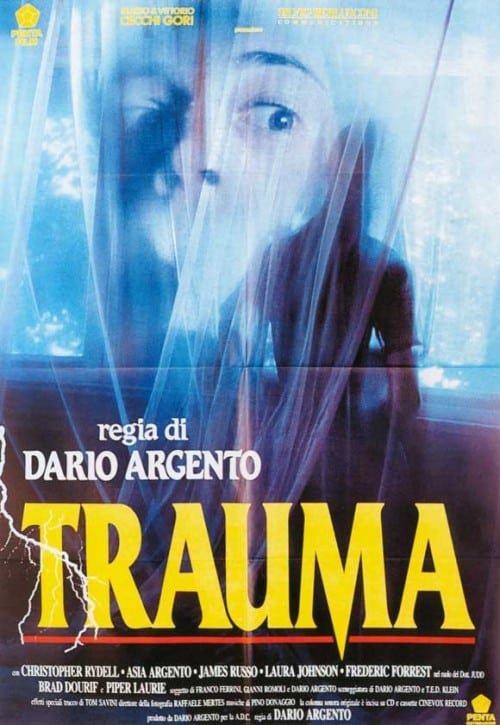
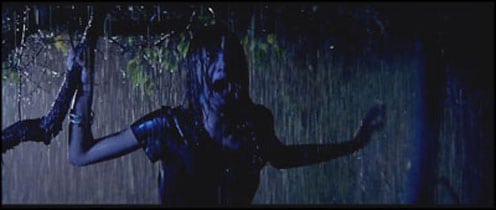
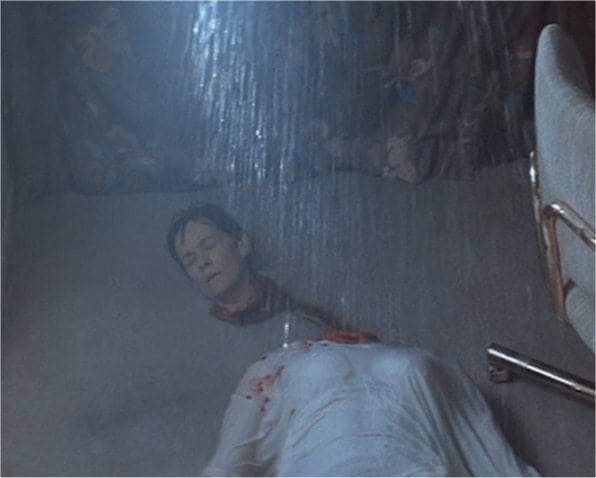



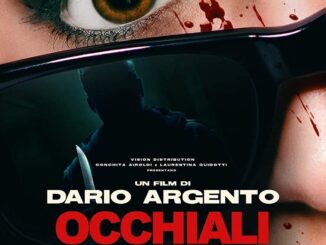
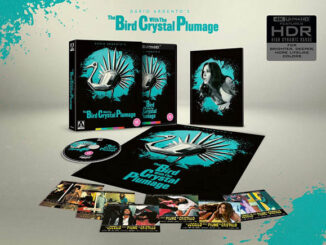
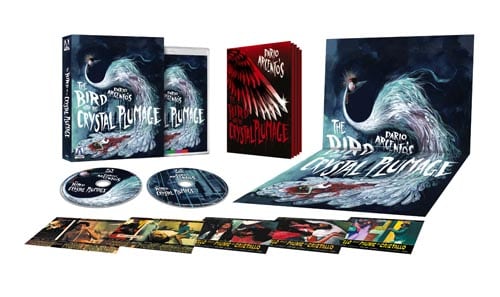
Be the first to comment